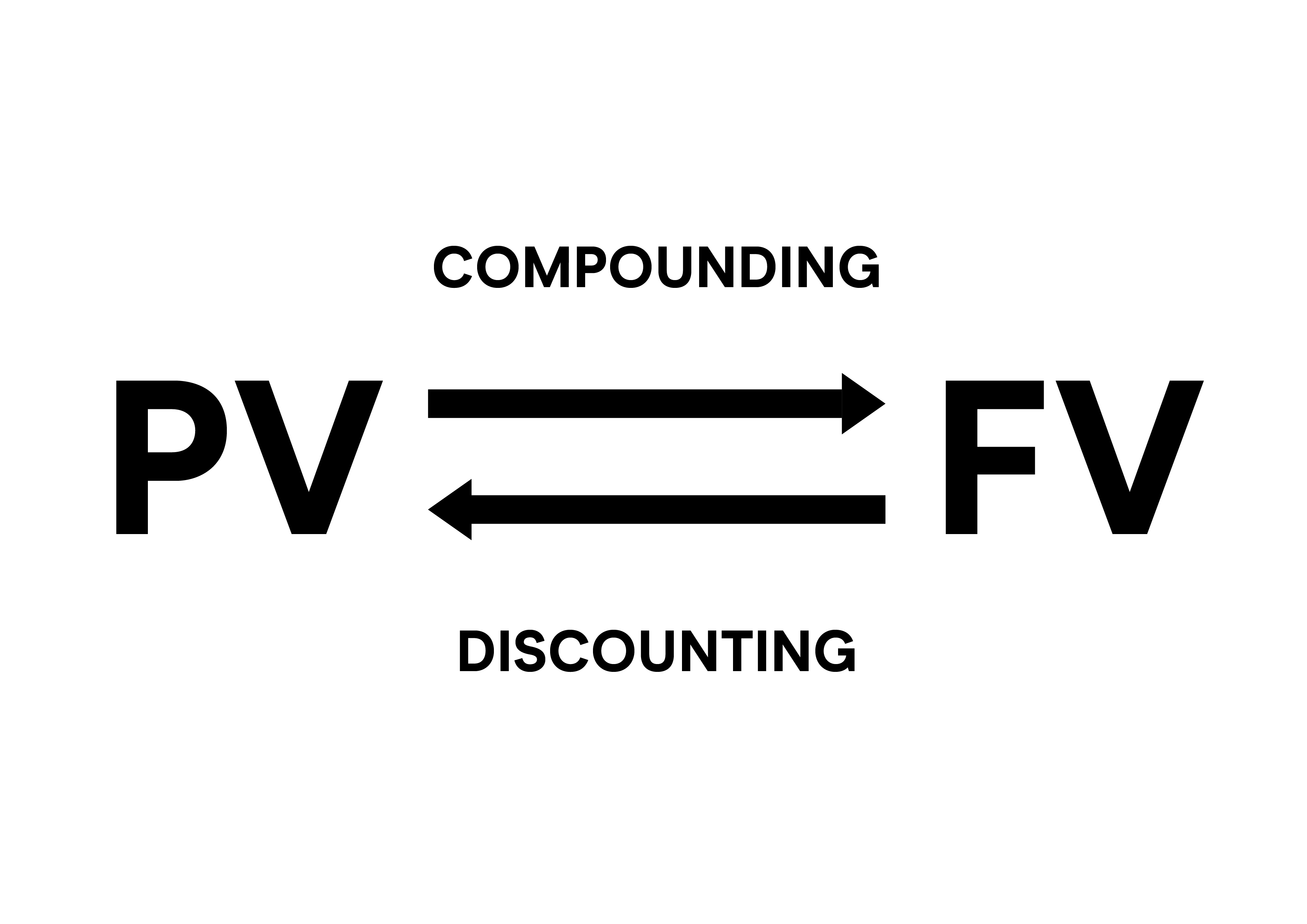Present value & zero coupon bonds
Bond Valuation and Analysis in Python

Joshua Mayhew
Options Trader
Present Value
- Money compounds from its value today to its value in the future
- This process also works in reverse
Present Value
- We can rearrange our compound interest equation from earlier:
$FV = PV \times (1 + r)^n$
$PV = \frac{FV}{(1 + r)^n}$
- Called "discounting to present value" or just "discounting"
Present Value

- To move from present value to future value, we compound
- To move from future value to present value, we discount
Present Value
A higher interest rate or longer time period increases the FV
So a higher interest rate or longer time period must decrease the PV
The pv() function
import numpy_financial as npf
?npf.pv
Signature: npf.pv(rate, nper, pmt, fv=0) Docstring: Compute the present value.Given: * a future value, `fv`* an interest `rate` compounded once per period, of which there are* `nper` total* a (fixed) payment, `pmt`Return: the value now
The pv() function
- How much should we invest now at 5% per year to have USD 10,000 in 10 years?
import numpy_financial as npf
npf.pv(rate=0.05, nper=10, pmt=0, fv=10000)
-6139.13
-npf.pv(rate=0.05, nper=10, pmt=0, fv=10000)
6139.13
The pv() function
- Or, by rearranging our compound interest equation from earlier:
pv = 10000 / (1 + 0.05) ** 10
print(pv)
6139.13
Bonds introduction
- Debt instrument, issued by governments and companies
- Investors buy bonds in exchange for interest
- Provide relatively safe and consistent returns
- Are usually less risky and volatile than stocks
Zero coupon bonds
- Pays a single cash-flow called the face value
- Paid at a single point in time called the maturity
- No intermediate cash-flows (called coupons) paid until maturity, hence the name
- Their price is the PV of the single cash-flow
Zero coupon bonds
- Usually issued at a discount to their face value
- This difference is called the yield (measured in percent)
Zero coupon bonds
Let's look at an example of a zero coupon bond that:
- Has a 3 year maturity
- A face value of USD 100
- A yield of 3.5%
What is the price of this bond?
Zero coupon bonds
- Zero coupon bond with a 3 year maturity that yields 3.5% and has a face value of USD 100:
import numpy_financial as npf
-npf.pv(rate=0.035, nper=3, pmt=0, fv=100)
90.19
- Or, again by rearranging our compound interest equation from earlier:
pv = 100 / (1 + 0.035) ** 3
print(pv)
90.19
Let's practice!
Bond Valuation and Analysis in Python

